Matador
Well-known member
Here's something I've been toying with. I was interested in DOA designs, and read all of Doug Self's stuff along with a ton of great information here at GDIY (a special thanks to PRR and Sam G. for all of the great write-ups here).
So here it is:
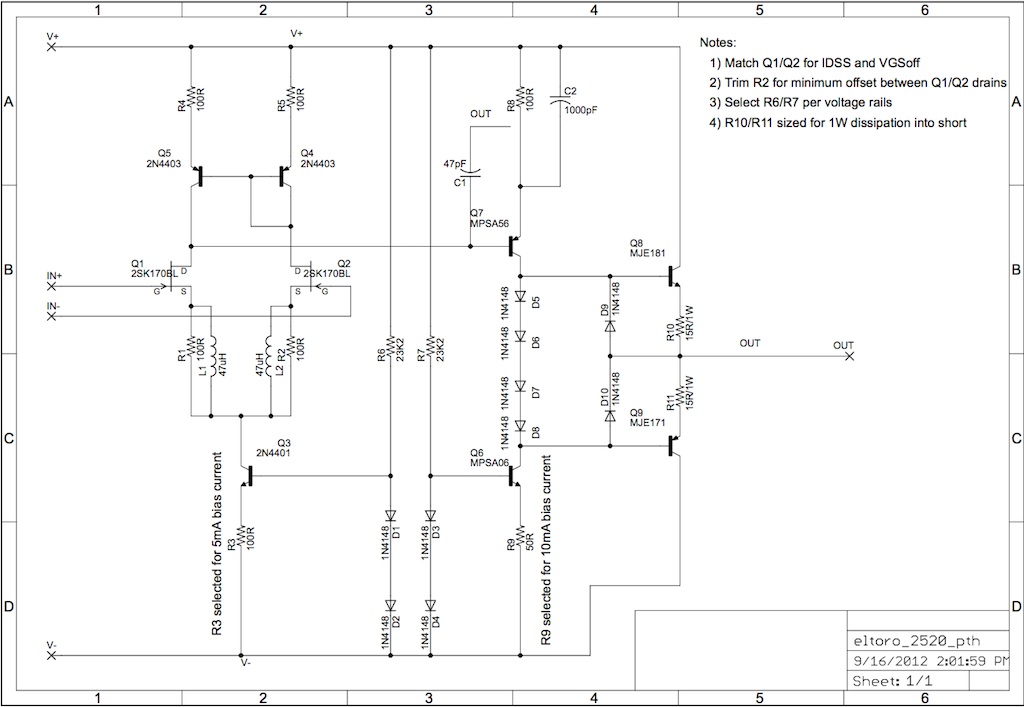
So it's essentially the front end of a JE990, converted to JFET devices for the differential pair glued to a standard VAS and follower output topology, all in a regular 2520 standard format. I added two additional diodes in case I want to experiment with Darlington type output devices. I assume I'll be able to bridge across two of them with the devices I plan to use (the MJE171/181 pair).
Here is the open-loop simulated response. I was shooting for about 90-ish db of gain open loop, as I was planning on using these in a twin-servo type topology where each devices runs at 35-40dB max each.
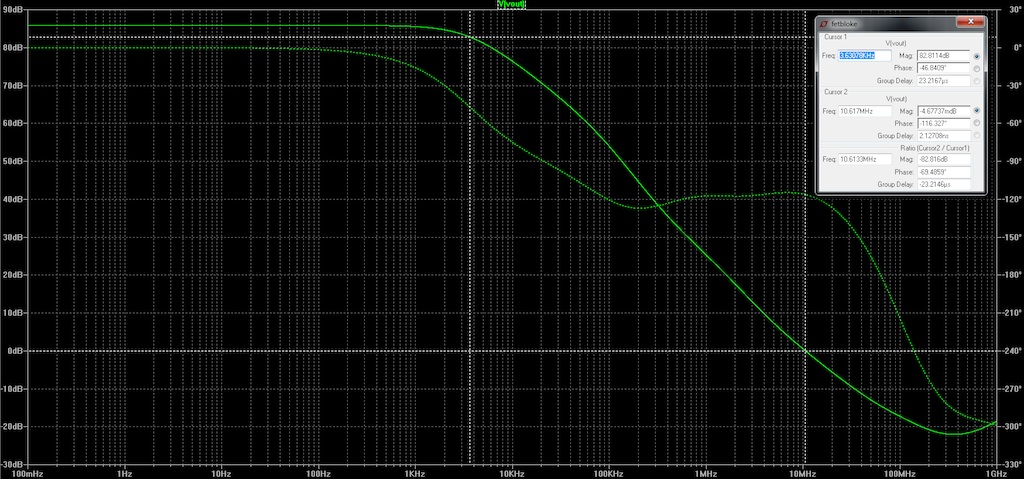
Open-loop gain falls to unity at about 10MHz. The plot seems to indicate a zero in the 5MHz range which i'll have to investigate further.
Here is the closed loop gain with the op-amp wired in the non-inverting follower configuration. The feedback resistance is 10K with 47pF of phase-lead compensation. This is driving into a 600 ohm load:
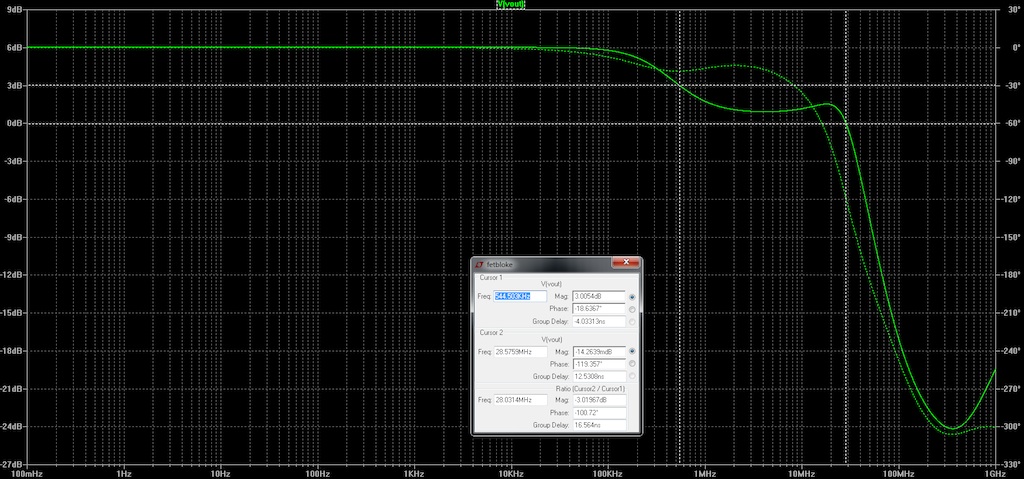
There is a peak in gain at about 20MHz: I'm assuming this is an interaction between the bypass inductors in the front end and the gate to source capacitance of the JFET's. Perhaps I need to lower the dominant pole a bit more by increasing the Miller capacitor? Phase margin looks good at about 60 degrees.
Here is the plot showing 40dB of gain: phase margin is 70 degrees.
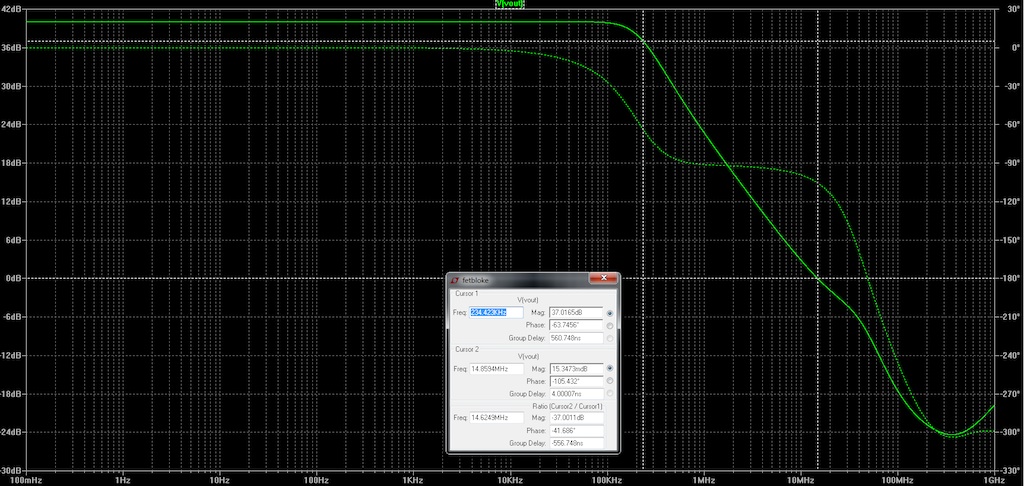
Lastly here is a plot showing 60dB of gain, with about 50 degrees of phase margin:
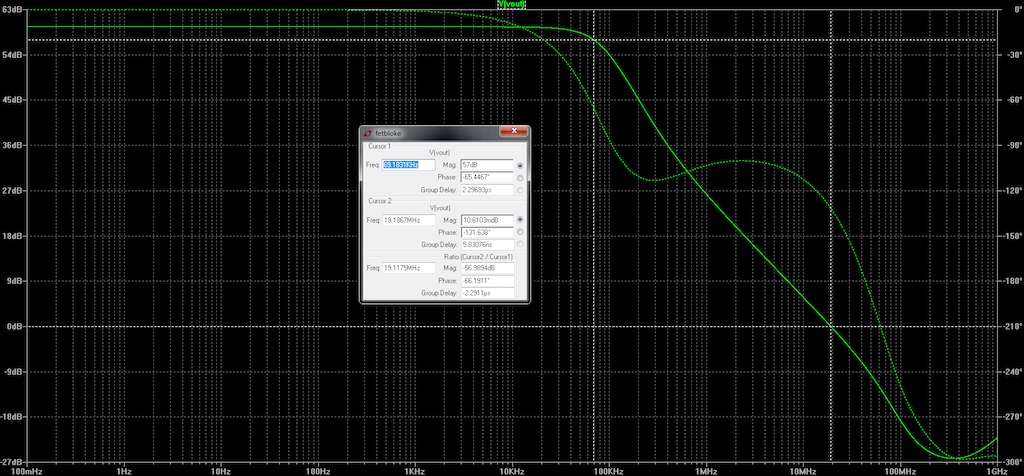
Slew rate into a light capacitive load is about 20V/us.
Based on the simulation, I feel that the op-amp might be under compensated. Open loop gain does not begin to fall until after 1KHz, however there appears to be enough phase margin with the existing compensation values. However this will change as the load becomes more capacitive. Slew rate seems pretty fast but I don't have a good feel for what denotes "fast enough".
So here is the layout in a standard 2520 format:
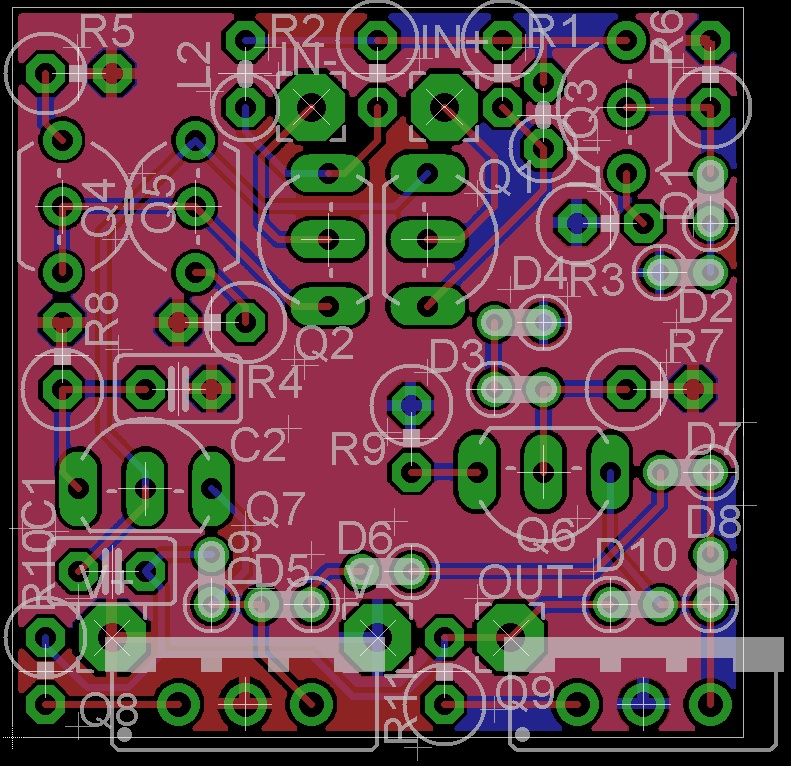
Any criticism or feedback is appreciated!
So here it is:

So it's essentially the front end of a JE990, converted to JFET devices for the differential pair glued to a standard VAS and follower output topology, all in a regular 2520 standard format. I added two additional diodes in case I want to experiment with Darlington type output devices. I assume I'll be able to bridge across two of them with the devices I plan to use (the MJE171/181 pair).
Here is the open-loop simulated response. I was shooting for about 90-ish db of gain open loop, as I was planning on using these in a twin-servo type topology where each devices runs at 35-40dB max each.

Open-loop gain falls to unity at about 10MHz. The plot seems to indicate a zero in the 5MHz range which i'll have to investigate further.
Here is the closed loop gain with the op-amp wired in the non-inverting follower configuration. The feedback resistance is 10K with 47pF of phase-lead compensation. This is driving into a 600 ohm load:

There is a peak in gain at about 20MHz: I'm assuming this is an interaction between the bypass inductors in the front end and the gate to source capacitance of the JFET's. Perhaps I need to lower the dominant pole a bit more by increasing the Miller capacitor? Phase margin looks good at about 60 degrees.
Here is the plot showing 40dB of gain: phase margin is 70 degrees.

Lastly here is a plot showing 60dB of gain, with about 50 degrees of phase margin:

Slew rate into a light capacitive load is about 20V/us.
Based on the simulation, I feel that the op-amp might be under compensated. Open loop gain does not begin to fall until after 1KHz, however there appears to be enough phase margin with the existing compensation values. However this will change as the load becomes more capacitive. Slew rate seems pretty fast but I don't have a good feel for what denotes "fast enough".
So here is the layout in a standard 2520 format:

Any criticism or feedback is appreciated!


